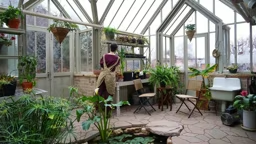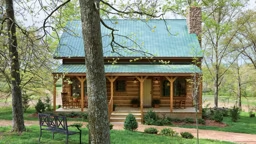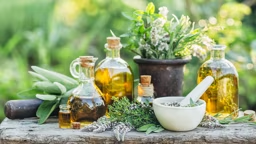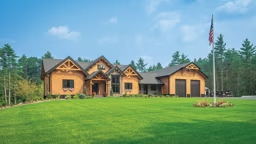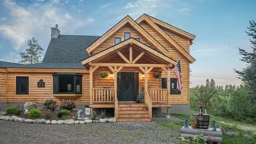
Every house needs landscaping. Sure, plants will add curb appeal to your log home, but they also serve a very practical purpose: Shrubs prevent too much rainwater from pooling next to your foundation, and trees can cut cooling costs, thanks to the shade they provide. But to reap the complete set of your landscape’s vegetal advantages, consider planting options that aren’t merely attractive — they’re delicious.
This is called “edible landscaping” or “foodscaping,” which differs from a standard vegetable garden or fruit-tree orchard because they’re used in a more strategic and cosmetic way. In short, it’s the practical integration of food plants within a decorative setting, and with continued emphasis on “clean eating,” you get the added satisfaction of knowing that they’re as locally sourced as you can get. Here are some tips for integrating some nibbles among your ornamentals.
Trellised Grapes or Cherry Tomatoes
If you have any type of gazebo, porch with latticework or arbor, edibles are a perfect complement. Imagine a warm summer evening dinner party where guests can pluck grapes from just above their heads or a fresh salad containing succulent vine-ripened tomatoes. Not to mention that the vines provide ample shade and plenty of character.
Pots of Culinary Herbs
There are some herbs, like mint and cilantro, that will take over a space if given the chance, but placing them in pots keeps that growth in check. It also creates an opportunity for a flexible, movable hardscape. Place the pots throughout a flowerbed to give the space more interest, variety and fragrance. An added benefit is that their aromas confuse pests, protecting other ornamental or flowering plants and helping them to thrive. Consider options like lavender, rosemary and Thai basil.
Dwarf Fruit Trees
Standard-sized fruit trees may be too overwhelming in a varied landscape, especially if you’re planting around a house or along another building. But dwarf fruit trees grow only a few feet tall and often yield full-size fruits like apricots, cherries, peaches and plums. Plus, they’re easier options for the hobby gardener to handle.
Between-Stone Creepers
To give your landscape that charming, French-country garden look, landscapers suggest placing walkway stones or large pavers several inches apart with greenery growing between them. So, why not make it edible? Herbs like oregano, lemon thyme and peppermint will not only fill in those spaces nicely, they’ll also release a delightful bouquet when you walk by them.
Vegetables as Borders
Heads of lettuce and bunches of spinach are not just good for you, they are good looking, too. Consider lining a pathway with these veggies and adding colorful blooms like nasturtiums or marigolds (also edible!), combining beauty and function. With edible landscaping, there’s always a risk that you’ll be feeding more than your family — bunnies and squirrels will certainly appreciate your efforts. But by interweaving edibles among your other plants, there should be plenty for everyone, and you will maximize your yard to its fullest.
See Also: How to Create an Outdoor Landscape




